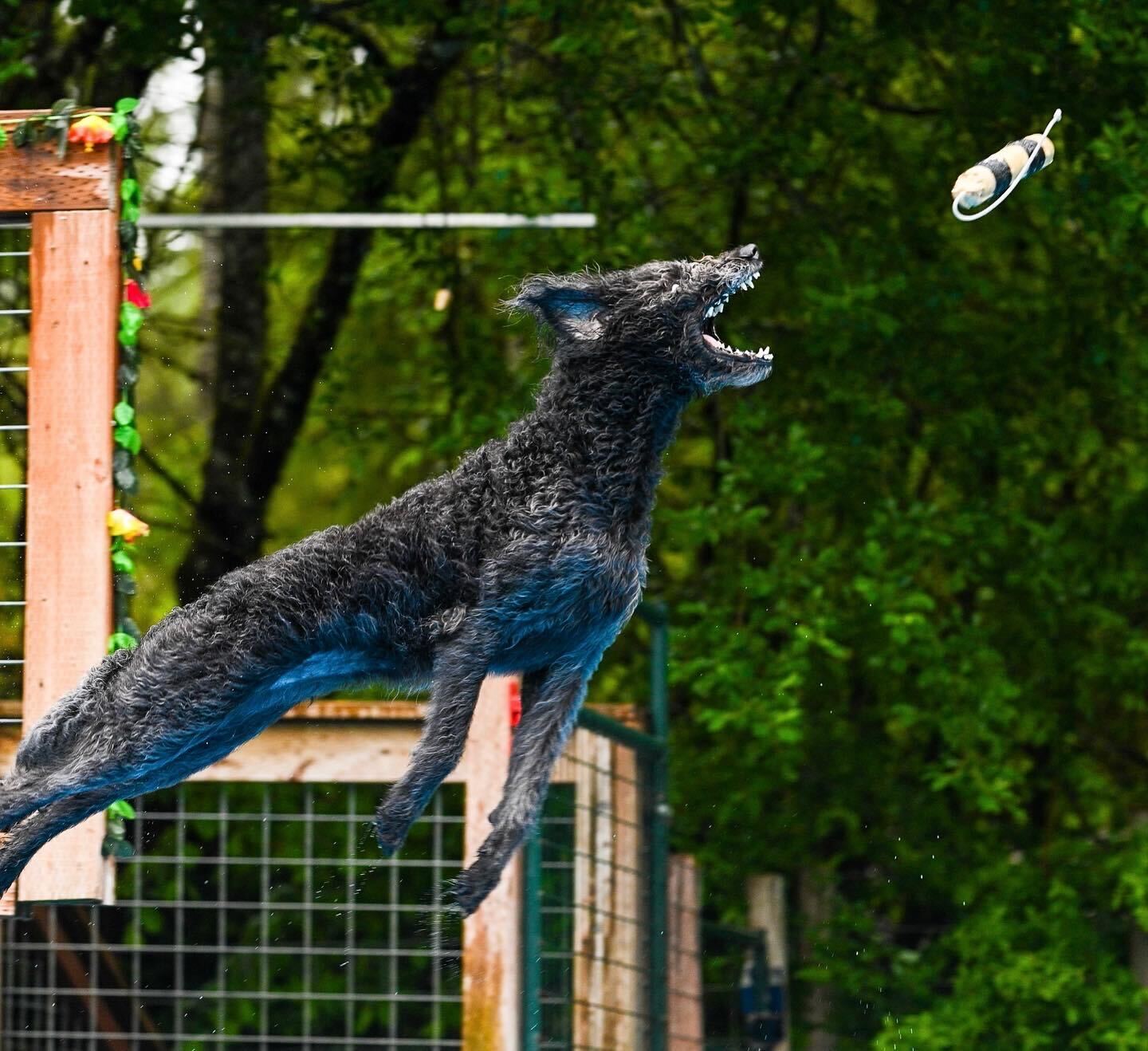When dogs experience tooth damage, it can really put a cramp in their style. Sometimes, removing that problematic tooth is the best option to get them back to feeling comfortable again.
Depending on your dog’s specific issue, your vet might recommend a tooth extraction to help your pup. Here’s what to expect.
- Your dog might need to have teeth removed as a result of gum disease, damaged teeth, jaw fractures, or issues with baby teeth or abnormal tooth and jaw development.
- A dental extraction procedure requires your dog to be put under general anesthesia. The whole process often involves an x-ray, dental cleaning, tooth removal, stitches, and polishing.
- Depending on the severity of your dog’s condition, the cost of a tooth extraction will cost anything from several hundred to several thousand dollars.
- Regularly brushing your dog’s teeth, in addition to bringing them in for an annual dental cleaning can help prevent the need for tooth extractions down the line.
Why do dogs need tooth extractions?
Dogs may need tooth extractions if an underlying condition is causing irreparable damage to their pearly whites. That includes things like:
- Gum disease. Also called periodontal disease, gum disease can slowly destroy the bone and gum tissues that support your pup’s teeth. When the bacterial infection gets too bad, the diseased tooth becomes loose below the gum line and needs to be removed.
- Fractured or chipped teeth. Some tooth fractures and chips can cause so much damage that it’s best to remove the damaged teeth.
- Jaw fractures. A fractured jaw can leave teeth damaged, loose, in need of extraction.
- Baby teeth. Sometimes your dog’s baby teeth, also called deciduous teeth, need to be removed to make room for the adult teeth to grow in correctly.
- Abnormal tooth or jaw development. If your dog’s teeth or jaw develop abnormally, teeth can be too close and may press and grow against each other, causing pain.
Basically: If it’s not possible or practical to treat the dental problem and salvage the affected teeth, then extracting the tooth can improve your dog’s overall comfort and dental health.
What happens during a dental extraction?
The way that your vet performs a tooth extraction will depend on the affected tooth and any complications, like the number of teeth that are infected or broken. Some extractions can take minutes, while more complicated extractions might take an hour or more.
When you drop your dog off at the vet for an extraction surgery, your vet will take some or all of these steps:
- Physical examination. Because your dog will need to be put under general anesthesia, your vet will start by examining your dog, taking their temperature, listening to their heart and lungs, and running bloodwork to make sure their organs are healthy enough for surgery.
- Sedative. Your vet may administer a mild sedative via an intramuscular injection. This sedative helps to keep your dog calm as they are prepared for surgery.
- General anesthesia. Next, your vet will place a catheter in a vein. This catheter makes it easy to administer the general anesthesia and any other medications your dog might need during the procedure.
- X-rays. Your vet will wait until after your pet is under to get a precise view of the teeth that need to be removed.
- Teeth cleaning. The vet will clean and examine your dog’s teeth and identify any teeth to be extracted.
- Extraction. Your dog will receive nerve blocks to prevent them from feeling any pain. Then, the teeth and their roots will be cut into pieces with a dental drill, making for easier removal.
- Stitches. Once the teeth are removed, your vet will stitch the gums in the extraction site back together. These sutures will gradually dissolve on their own, so there’s no need to worry about removing them.
- Scale and polish. With the extraction’s done, your vet will scale and polish the rest of your pup’s pearly whites before your dog comes out of anesthesia.

How much does a dental extraction cost?
As you can imagine, the cost of oral surgery can be pretty steep. Extraction costs can vary significantly and will depend on factors like where you live, your vet’s office’s policies, and how complicated your dog’s case is. Generally speaking, extractions can cost anywhere from several hundred to several thousand dollars.
If your dog is a particularly complicated case, your vet might refer you to a board-certified veterinary dentist. Surgical extractions at these specialty facilities can be more expensive than those performed at your local vet’s office.
Since costs can vary so significantly, it’s best to ask your vet for an estimate. Your vet will be able to give you a detailed breakdown of the anticipated expenses involved with the surgery, as well as the potential overall cost. Remember that this is just an estimate, and if your vet finds additional complications during the procedure, the cost of the extractions could increase.
Lemonade Pet health insurance offers a dental illness add-on, which can help cover the cost of treatments, procedures, diagnostics, and medications related to new dental illness. This includes crowns, extractions, root canals, dental surgeries, and treatments for gum disease like gingivitis and periodontal disease.
If your dog needs to have a tooth removed as the result of an accident, let’s say, after some roughhousing at the dog park, a base accident and illness Lemonade Pet policy will probably have you covered. Keep in mind that tooth extractions required for orthodontic reasons will never be covered by Lemonade Pet.
What’s the recovery process following a dental extraction?
While your dog will be on pain medication after the dental procedure, they’re likely still going to be a bit tender and may not quite feel like themselves for a day or so after the surgery. However, most dogs regain their appetites and are back to their playful selves within two to three days.
When your dog comes home, your vet will likely ask you to feed them soft food to make chewing more comfortable. Hard as it might be, you also might need to keep your dog quiet for a few days to give them time to heal. Games of fetch or trips to the dog park might be off the table for a while.
How do I avoid complications after my dog’s dental extraction?
The best way to avoid complications after a dog tooth extraction is to carefully follow your vet’s instructions. Your dog may be on pain medications and antibiotics, and it’s important to always give your dog the complete course of antibiotics, even if you think they’re all healed up.
Keep a close eye on your dog and look for issues like excessive pain, ongoing reluctance to eat, bleeding from the mouth, and even vomiting or diarrhea. Contact your vet right away if you notice any of these symptoms lasting more than a day or two, and make sure that you bring your dog in for any scheduled follow-up appointments to verify that the site is healing well.

How can I avoid my dog having to undergo a dental extraction?
Routine dental care and cleanings can go a long way toward reducing your dog’s chances of ever needing a dental extraction. Daily tooth brushing can help to keep your pup’s teeth healthy, and professional dental cleanings can provide a deeper cleaning to remove anything that your at-home brushings missed.
Luckily, Lemonade offers several Preventative Care packages to help cover the costs of your dog’s ongoing care, like annual wellness exams and vaccines. Lemonade’s Preventative+ package will even help pay for your dog’s annual dental cleaning.
Before we go…
While good dental care can reduce the chance of your dog ever needing tooth extractions, sometimes accidents and injuries still happen.
Dental issues can be very painful, and extracting teeth can often put an end to your best friend’s pain. When you pay close attention to your dog’s dental health, you can catch potential issues early on and hopefully prevent them from progressing to the point where your dog needs to have a tooth removed.
A few quick words, because we <3 our lawyers: This post is general in nature, and any statement in it doesn’t alter the terms, conditions, exclusions, or limitations of policies issued by Lemonade, which differ according to your state of residence. You’re encouraged to discuss your specific circumstances with your own professional advisors. The purpose of this post is merely to provide you with info and insights you can use to make such discussions more productive! Naturally, all comments by, or references to, third parties represent their own views, and Lemonade assumes no responsibility for them. Coverage and discounts may not be available in all states.





